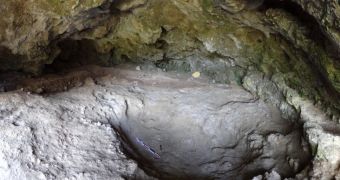Recent digs conducted at a famous burial site in France have finally settled the long-standing debate about whether or not Neanderthals buried their dead. According to the new paper, our distant cousins did not leave their dead prey to the elements, but rather entombed them in primitive ceremonies.
The Neanderthal burial site at La Chapelle-aux-Saints, in southwestern France, was first discovered in the early twentieth century, nearly a century ago, and immediately sparked heated debates in the scientific community about the funerary practices and burials of our related species.
The new investigation was conducted by researchers from the French National Center for Scientific Research (CNRS), the research company Archéosphère, and the University of Bordeaux, in France.
After conducting new archaeological excavations, and reassessing the remains discovered at the dig site over the years, the group was finally able to determine that Neanderthal indeed buried their dead, hinting at the presence of a fundamentally-modern behavior millennia ago, AlphaGalileo reports.
Details of the discovery appear in this week's online issue of the esteemed scientific journal Proceedings of the National Academy of Sciences (PNAS). The team argues that Neanderthals had more complex cognitive abilities than originally estimated, based on this discovery.
Since first opening up the dig site, in 1908, scientists discovered telltale signs that pointed at the intensive use of pigments, as well as the collection of ornamental shells and feathers, for ancient funerals. However, studies conducted over the past two decades cast some doubts on those findings.
The new investigation was able to prove those researches wrong. The team, led by CNRS researcher William Rendu, from the Center for International Research in the Humanities and Social Sciences, found that the cave was actually part of a complex of seven caves scattered around the hillside.
Additionally, the group unearthed the original dig site where the Neanderthal remains were found, and concluded that the burial pit was indeed of anthropogenic (man-made) origins. This suggests that some members of an ancient hominid group took the time to dig a grave out of respect or compassion for one of their fallen comrades.
Three new Neanderthal fossils were discovered during the digs, one belonging to an adult, and two belonging to children. This could mean that the cave was once occupied by a larger social group, maybe an extended family.

 14 DAY TRIAL //
14 DAY TRIAL //